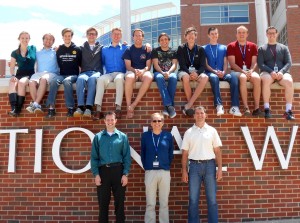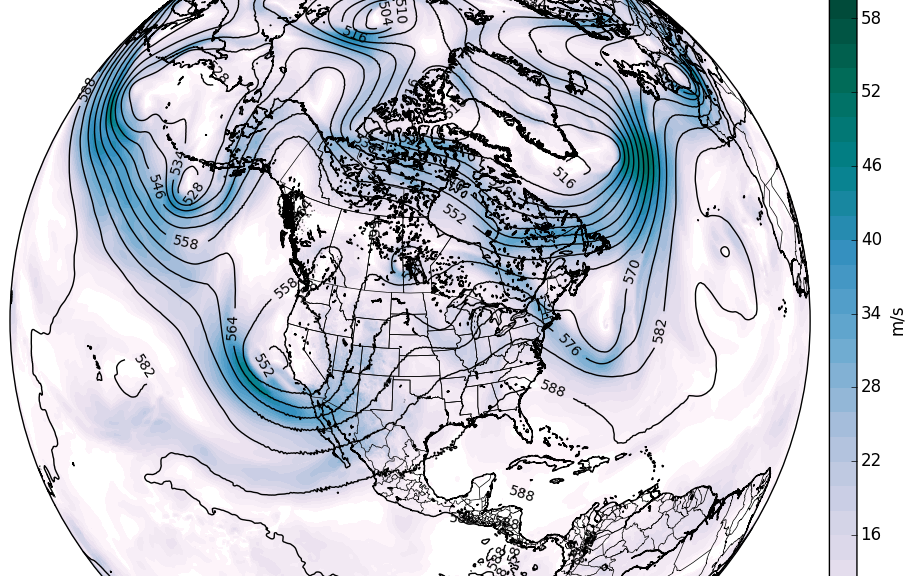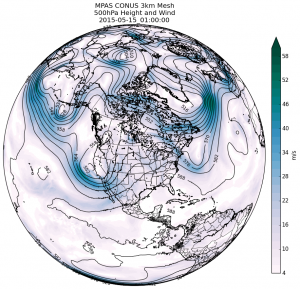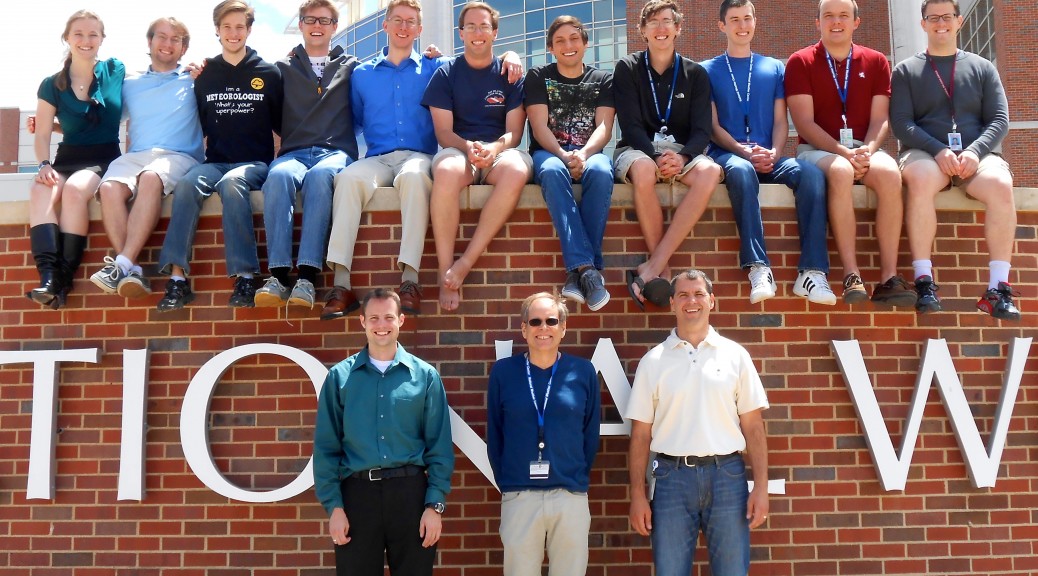 Our lab’s research focuses on the dynamics and physical mechanisms of high latitude atmospheric processes. We study Arctic and Antarctic processes using high resolution regional and global numerical models such as NCAR’s Weather Research and Forecasting (WRF) model and the Model for the Prediction Across Scales (MPAS). Since these locations are relatively data-sparse regions of the globe, we also study atmospheric predictability through ensemble data assimilation techniques using tools such as the Data Assimilation Research Testbed (DART) to better understand how to extend information provided by observations to improve numerical models. Some of the primary scientific applications are described below.
Our lab’s research focuses on the dynamics and physical mechanisms of high latitude atmospheric processes. We study Arctic and Antarctic processes using high resolution regional and global numerical models such as NCAR’s Weather Research and Forecasting (WRF) model and the Model for the Prediction Across Scales (MPAS). Since these locations are relatively data-sparse regions of the globe, we also study atmospheric predictability through ensemble data assimilation techniques using tools such as the Data Assimilation Research Testbed (DART) to better understand how to extend information provided by observations to improve numerical models. Some of the primary scientific applications are described below.
Tropopause polar vortices (TPVs): TPVs are coherent vortices that are based on the tropopause in higher latitude regions. Higher latitudes are a unique environment for their maintenance due to colder temperatures and relatively low latent heating rates, allowing radiative processes to dominate. Once TPVs exist, a characteristic downward intrusion of dry air results in an increase in longwave radiative cooling inside the vortex.
Since TPVs are often isolated from the jet stream, they can have long lifetimes over the Arctic—sometimes on the order of months! Lifetimes are especially long during the summer. We are currently examining how they interact with sea ice, since during the winter reductions in sea ice can increase latent heating and during the summer TPVs can more easily advect the thin or broken sea ice over the Arctic.
Midlatitude interactions: Motivation to better understand TPVs derives from the need to improve predictability in middle latitudes from weather to climate scales. TPVs are characterized by an upper-level potential vorticity anomaly that are important dynamical features needed in order for surface cyclones to generate. An understanding of their interactions with midlatitude weather is not well understood, and therefore a better understanding of TPVs could ultimately lead to improvement in the forecasting of major events such as snowstorms, severe weather, sea ice, and extratropical transitions.
Antarctic ensemble data assimilation: Our group utilizes ensemble data assimilation techiques to help build our understanding of the processes that are represented in numerical models and improve the capability of numerical weather prediciton. The Antarctic is of particular interest to our group since it is the most data sparse region of the globe. We are currently working on methods to best assimilate the observations that we do have in order to improve weather and climate prediction.
Arctic cloud/atmosphere/surface interactions: There are many atmospheric processes that link together cloud properties, the thermodynamic state, turbulence, radiation, and ultimately surface properties in the Arctic environment. The Integrated Characterization of Energy, Clouds, Atmospheric state, and Precipitation at Summit (ICECAPS) project is collecting a comprehensive dataset in the center of the Greenland Ice Sheet that is being used to investigate these processes and improve the ability to model cloud and precipitation above Greenland.



